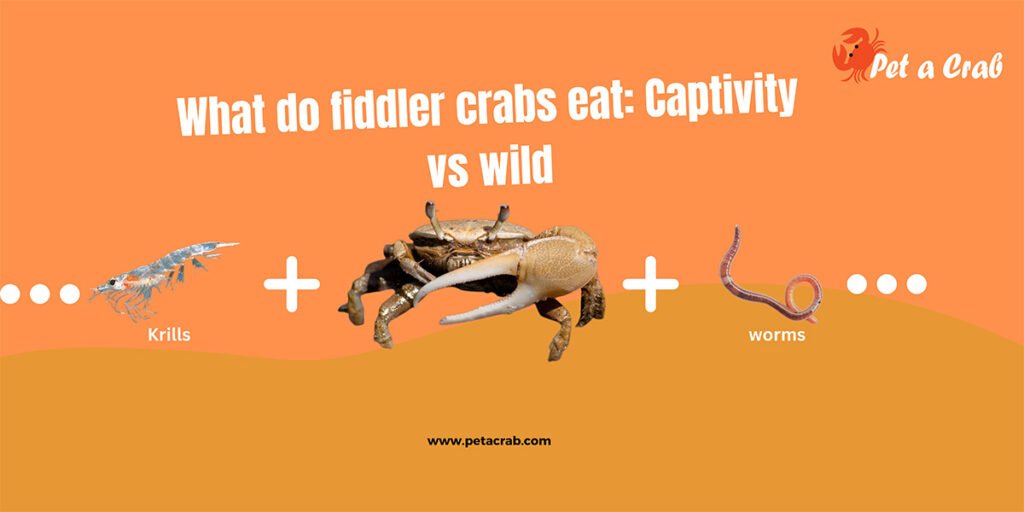Ever wonder why some crabs, like king crabs, don’t look much like your typical crab? That is because they aren’t true crabs! True crabs vs false crabs are such an interesting topic in marine biology, and their differences go way beyond just their shells. From their body structure to their evolutionary history, these two groups are quite distinct.
This article will examine the characteristics of true vs false crabs, detailing their anatomical, evolutionary, and behavioral differences. Also, explaining what are considered true crabs and why some well-known species, such as king crabs and hermit crabs, are not considered true crabs.
What Are True Crabs?
Definition and Classification
True crabs are a group of decapod crustaceans constituting the infra-order Brachyura, having the general form of crabs with a compact, symmetrical body structure and a fully developed exoskeleton. They have a small abdomen hidden underneath their thorax, which separates them from all other crab types.
Scientifically known as Brachyura, these crabs have a rigid carapace and specific locomotion suited for marine, freshwater, and terrestrial environments in various ways.
Characteristics of True Crabs
True crabs are characterized by a suite of morphological and behavioral features that set them apart from other Decapoda, including:
Carapace Structure: A wide, rigid, and usually calcified carapace that offers protection against predators and environmental risks.
Abdomen Positioning: A highly reduced and folded abdomen, securely tucked under the thorax, aiding in stability and streamlined movement.
Arrangement and Function of Legs: Five pairs of legs, the first modified as powerful chelae for defense, capturing food, and fighting for territory.
Locomotion: Mostly lateral, due to the articulation of their legs, enabling them to be very agile in narrow spaces.
Sensory Adaptation: Compound eyes on stalks for a wide field of view and highly sensitive antennae for the reception of chemical signals in the water.
Molting and Growth: Periodically undergo molting, or ecdysis which is an important process for size adaptation and shell regeneration.
Reproductive Traits: Most species are characterized by complex reproductive behaviors, including mate selection, brooding of eggs, and larval developments in aquatic environments.
Read More: Are Aquatic Crabs as Pets a Good Choice?”
What Are Examples of True Crabs?
Many species of true crabs are found in both marine and freshwater environments around the world. Examples include:
What are False Crabs?
Definition and Classification
The false crab comes under the infra-order Anomura-a group of diverse decapod crustaceans which have independently developed away from the true crabs, Brachyura. While giving a superficial resemblance to true crabs, their distinctive morphological and anatomical modifications classify them into a different taxonomic order.
It may be asymmetrical in body form, with special limb modifications and alternative modes of locomotion, extending into different varieties of marine, freshwater, and terrestrial ecosystems.
Characteristics of False Crabs
There are many ways in which false crabs differ from true crabs, such as in skeletal structure, limb functionality, behavioral adaptations of life, etc.
Shape of Carapace and Body: While the carapace is wide and rounded in true crabs, in false crabs, it is more elongated, sometimes irregularly shaped, or even asymmetrical.
Abdomen Structure: The abdomen is not fully tucked under the thorax. In many species, it remains partially or fully exposed.
Limb Configuration and Reduction: Most false crabs possess fewer than five pairs of fully functional walking legs, with the hindmost pair usually being reduced in size, modified for specialized purposes, or hidden under the carapace.
Locomotion and Mobility: While true crabs walk sideways, false crabs may walk forward, sideways, or even climb with their claws, as in terrestrial species such as the coconut crab.
Exoskeleton Adaptations: Whereas true crabs rely on the calcification of their exoskeleton for protection, some false crabs, like hermit crabs, rely on external objects-for example, shells for defense.
Ecological Adaptability: False crabs occupy a wide range of habitats, from deep-sea trenches to tropical beaches, with various modes of survival that include burrowing, scavenging, and opportunistic predation.
Reproductive and Molting Differences: Unlike the true crabs, many species of false crabs exhibit particular reproductive habits. Their egg-brooding behavior and specialized larval development phases affect their survival rates.
What are Examples of False Crabs?
The false crabs are a very diverse group with many species that are of significant ecological importance. Some of the best-known examples include the following:
- Hermit Crab (Paguroidea)
- King Crab (Lithodidae)
- Porcelain Crab (Porcellanidae)
- Coconut Crab (Birgus latro)
- Squat Lobster (Galatheidae)
Differences Between True Crabs and False Crabs
Crabs are broadly classified into two categories, including true crabs or Brachyura, and false crabs or Anomura. Although they may look like each other, there are major anatomical and behavioral differences between false crabs and true crabs. The following table describes the major differences:
| Feature | True Crabs (Brachyura) | False Crabs (Anomura) |
| Carapace Shape | Broad, round, and symmetrical | Often elongated, asymmetrical, or irregular in shape |
| Abdomen Position | Tucked under the body, hidden beneath the carapace | Partially or fully exposed, often visible from the underside |
| Leg Count & Functionality | Five pairs of legs, with the first pair modified into pincers | Often fewer than five functional walking legs, with some pairs adapted for other functions |
| Claws (Chelae) Size | Generally symmetrical, both claws are similar in size | Frequently asymmetrical, with one claw larger than the other |
| Shell Structure | Hard, well-developed exoskeleton | Some species rely on external shells or have softer body parts |
| Reproductive Features | Females carry eggs under their broad abdomen | Females often carry eggs in a more exposed manner |
| Examples | Blue Crab, Dungeness Crab, Japanese Spider Crab | Hermit Crab, King Crab, Coconut Crab |
Evolutionary Background and Taxonomy
False and true crabs look similar due to convergent evolution, developing similar features for the same purposes. However, the ancestry of true crabs traces back to different lineages. One commonly asked question remains, “Why are king crabs not true crabs?” Because of their origin, king crabs evolved from hermit crabs, despite partial similarities in some of their morphological features.
Habitat and Behavior Comparison
Where Are True Crabs Found?
True crabs are typically marine, representing a majority that live in oceans, coastal waters, and deep-sea portions. Although some have adapted to freshwater environments.
Where Are False Crabs Found?
Many false crabs dwell in deep-sea bottoms. Some, like hermit crabs, rely on mollusk shells for protection, while others hide under rocks or coral boulders.
Note: If you’re interested in keeping unique aquatic pets, you should read this guide on “Can You Keep a Pet Mud Crab?
Behavioral Differences Between True Crabs vs False Crabs
One major difference between false crabs vs true crabs is in their behavior and levels of defense:
True Crabs
These are crustaceans that are usually more aggressive and territorial, fighting over either their burrows or sources of food. Most species, including fiddler crabs, have exhibited dominance behavior through the use of their outsized claws as a means to deter rivals.
False crabs
They are generally scavengers, using stealth and the availability of external protection rather than confrontation. For example, hermit crabs continuously search for larger and more robust shells while growing to ensure better defense against threats.
Final Thoughts
The debate of true crabs vs false crabs extends to their nature and different ways of survival and living mechanisms. Whereas true crabs dominated the benthic systems due to their strength and aggression, the false crabs have developed into scavengers and shelter seekers. Their contrasting adaptations not only shape their ecological niches but also emphasize the vast diversity within crustacean evolution, influencing marine food chains and environmental interactions. For more info on fascinating marine creatures, take a look at this “Peacock Mantis Shrimp Care” guide.


